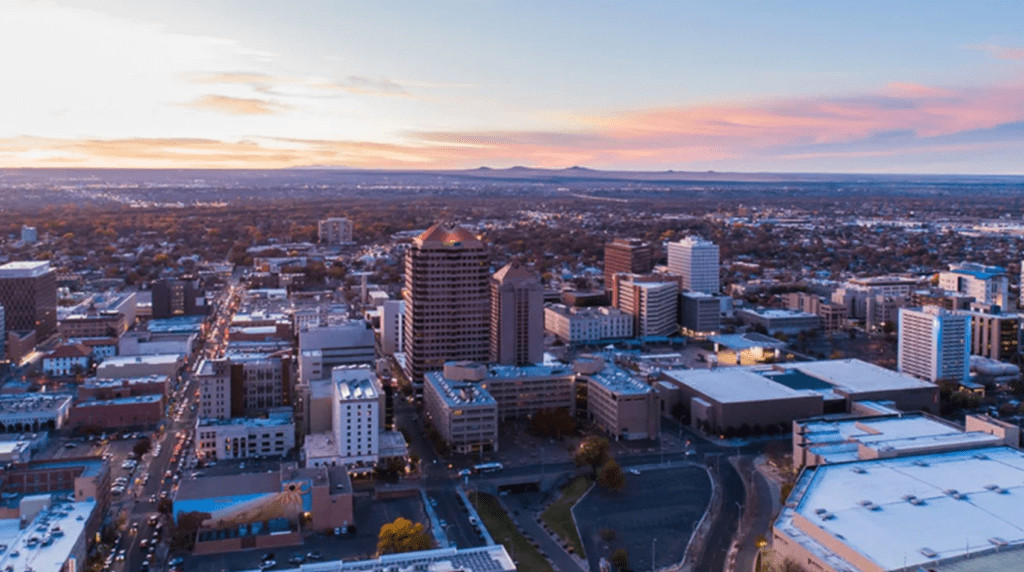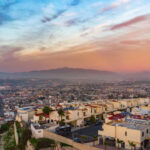Albuquerque, a city steeped in history and cultural diversity, serves as the vibrant heart of New Mexico. Its unique Southwestern charm is deeply intertwined with its demographic makeup, reflecting a rich tapestry of ethnicities and traditions. As the state’s largest city, understanding the population of Albuquerque, New Mexico is key to appreciating its dynamic character and ongoing evolution. This article delves into the demographics of Albuquerque, providing a detailed look at its population size, diversity, and the factors shaping its growth.
Albuquerque: A City Overview
Nestled in Bernalillo County, Albuquerque sits within the Albuquerque Basin at a notable elevation of 5,312 feet (1,619 meters). The majestic Rio Grande carves through the city from north to south, while the Sandia Mountains tower to the east, reaching heights of 10,678 feet and offering a stunning natural backdrop.
Founded in 1706 initially as a Spanish military outpost, Albuquerque has undergone a remarkable transformation. Its historical roots are firmly planted in Mexican heritage, and it played a significant role during the Atomic Age. Today, Albuquerque is a modern metropolis celebrated for its rich cultural heritage, contemporary amenities, and a population that continues to evolve.
Delving into Albuquerque Demographics
Population Size and Growth Trends
In 2024, the population of Albuquerque, New Mexico was estimated to be approximately 557,161 residents. This figure firmly establishes Albuquerque as the most populous city in New Mexico. Analyzing population trends reveals a nuanced picture of growth and fluctuation influenced by economic shifts, migration patterns, and natural demographic changes. While recent data suggests a slight decrease in population within the city limits, the greater Albuquerque metropolitan area continues to expand.
Age and Gender Distribution
The median age in Albuquerque is 38 years, mirroring national averages. The city’s gender distribution is remarkably balanced, with approximately 49.07% of the population identifying as male and 50.93% as female. This equilibrium in age and gender contributes to a vibrant and diverse social and economic environment within the city.
Racial and Ethnic Composition: A Cultural Mosaic
Albuquerque’s demographic strength lies in its rich racial and ethnic diversity. The city is a true melting pot, with a significant Hispanic heritage shaping its cultural identity. Here’s a breakdown of the racial and ethnic composition:
- White (Non-Hispanic): 37.01%
- White (Hispanic): 23.64%
- Two or More Races (Hispanic): 14.91%
- Native American: 4.81%
- Black or African American: 3.16%
- Asian: 3.1%
- Native Hawaiian or Pacific Islander: 0.1%
- Other race (Hispanic and NonHispanic): 10.03%
Notably, Hispanic or Latino residents constitute a significant portion of the population, at 49.2%. This substantial Hispanic presence deeply influences Albuquerque’s culture, traditions, and community life, making it a unique Southwestern hub.
 Downtown Albuquerque
Downtown Albuquerque
Household and Family Structures
Understanding household structures provides further insight into Albuquerque’s social fabric.
- Married-couple families: 44.1%
- Single-person households: 26.5%
- Non-family households: 29.4%
This mix of household types reflects diverse lifestyles and family dynamics within the city.
Educational Attainment
Education is a cornerstone of Albuquerque’s community. According to the 2020 U.S. Census data:
- High school graduate or higher: 86.3%
- Bachelor’s degree or higher: 34.6%
Albuquerque is a center for higher education, home to prominent institutions like the University of New Mexico, contributing to a well-educated populace.
Income and Socioeconomic Factors
The median household income in Albuquerque was reported as $61,503 in 2024, based on U.S. Census Bureau data. However, economic challenges persist. Approximately 64.2% of the population aged 16 and over participate in the civilian labor force, with an unemployment rate around 5.5%.
Socioeconomic disparities are also evident, with 16.2% of Albuquerque residents living below the poverty line between 2017 and 2021. This poverty rate is higher than the national average, highlighting areas needing focused community and economic development efforts.
Metropolitan Albuquerque: Expanding Horizons
The Albuquerque metropolitan area extends beyond the city limits, encompassing Rio Rancho and Los Lunas. This broader region boasts a combined population of approximately 967,000 residents as of 2024. This figure underscores Albuquerque’s regional importance and its role as a central hub within New Mexico. The growth of the metro area contrasts with the slight population dip within the city proper, indicating suburban expansion trends.
Veteran Population
Veterans are a valued part of the Albuquerque community, representing 7.3% of the city’s population. A significant portion of the veteran population falls within the 65–74 years age range, reflecting the city’s long-standing connection to military service and veteran support.
Immigration and Global Connections
Immigration contributes to Albuquerque’s diverse population, with non-US citizens accounting for 10.1% of residents. The primary countries of origin for immigrants are Mexico and other nations, adding to the city’s multicultural character and global connections.
Healthcare and City Infrastructure
Albuquerque is equipped with comprehensive healthcare facilities, including major hospitals like Presbyterian Hospital and St. Joseph Hospital, serving the diverse health needs of its population. The city also benefits from ongoing infrastructure development and modern amenities that support its growing community and enhance the quality of life for its residents.
Albuquerque’s Population: A City in Progress
Albuquerque, New Mexico, stands as a testament to dynamic urban evolution. Its population, characterized by growth and diversity, is at the heart of its identity. While the city thrives with a robust economy and a median income aligning with national figures, it also faces socioeconomic challenges such as poverty and economic inequality. Addressing these disparities remains a key focus for Albuquerque as it strives for inclusive growth and continued prosperity. The city’s resilience and vibrant spirit ensure it will continue to evolve as a significant urban center in the American Southwest.
Frequently Asked Questions About Albuquerque’s Population
What is the current population of Albuquerque, NM?
In 2024, the estimated population of Albuquerque is approximately 557,161 residents. While this represents a slight decrease from the 2020 US Census figure of 564,855, the Albuquerque metropolitan area continues to experience population growth.
What is the ethnic makeup of Albuquerque?
Albuquerque is ethnically diverse, with a significant Hispanic/Latino population (nearly 50%), followed by White (Non-Hispanic), and various other racial and ethnic groups, creating a rich cultural mosaic.
How has Albuquerque’s population changed over time?
Albuquerque has generally experienced population growth over the decades. Current data indicates a slight population decrease within the city limits recently, but the broader Albuquerque Metro area continues to grow, reflecting regional expansion trends.
What are the main industries driving employment in Albuquerque?
Key industries in Albuquerque include healthcare, education, technology, and tourism. These sectors are vital to the city’s economy, providing diverse employment opportunities and contributing to its economic dynamism.
References:
- World Population Review. https://worldpopulationreview.com/us-cities/albuquerque-nm-population
- Macrotrends. https://www.macrotrends.net/global-metrics/cities/22908/albuquerque/population
- Albuquerque.com. https://albuquerque.com
- U.S. Census Bureau. https://www.census.gov/

